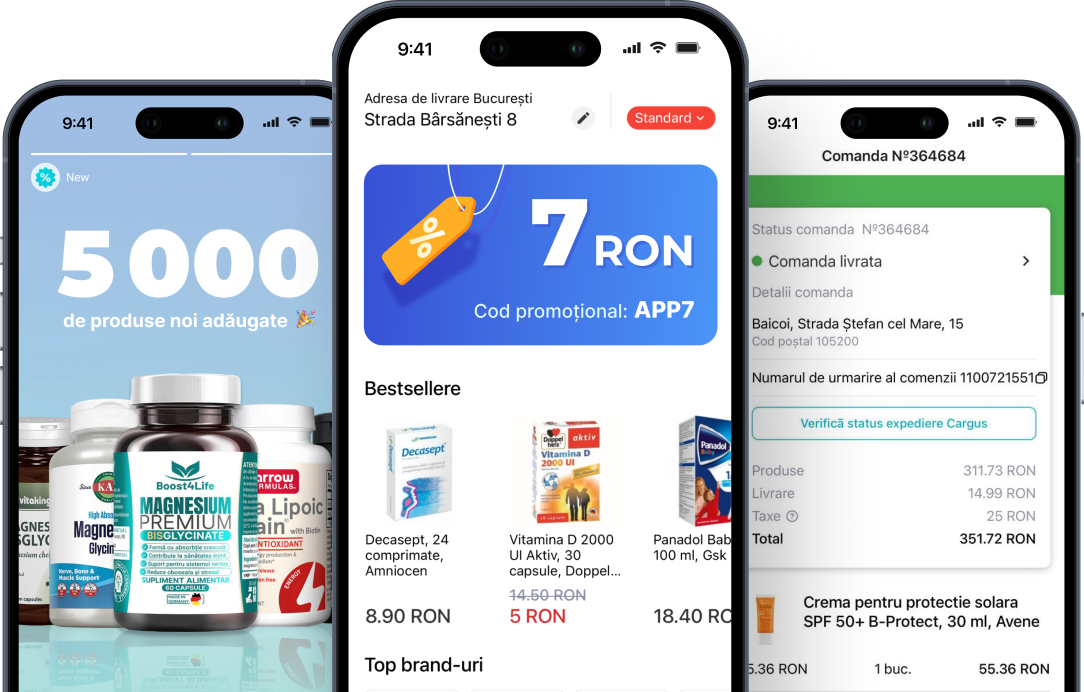Description
Rapid test for vitamin D, for self-testing CE0123, JusChek
The rapid test for vitamin D, with test cassette, is a rapid immunochromatographic test for the semi-quantitative detection of 25-hydroxyvitamin D (25 (OH) D) in human whole blood obtained by finger prick. This test provides a preliminary diagnostic result and can be used to screen for vitamin D deficiency
Vitamin D refers to a group of fat-soluble secosteroid vitamins responsible for increasing the intestinal absorption of calcium, iron, magnesium, phosphate and zinc. The most important compounds in this group, for humans, are vitamin D3 and vitamin D2.1 Vitamin D3 is produced naturally in human skin through exposure to ultraviolet light, and vitamin D2 is obtained mainly from food. Vitamin D is transported to the liver, where it is metabolized into 25-hydroxyvitamin D. In the medical field, the blood test for 25-hydroxyvitamin D is used to determine the concentration of vitamin D in the body. The concentration of 25-hydroxyvitamin D (including D2 and D3) in the blood is considered the best indicator of vitamin D levels. Vitamin D deficiency is currently recognized as a global epidemic. 2 Practically every cell in the body has receptors for vitamin D, which means that they all require a "sufficient" level of vitamin D to function properly. The health risks associated with vitamin D deficiency are much more serious than previously thought. Vitamin deficiencies have been linked to many serious conditions: osteoporosis, osteomalacia, multiple sclerosis, cardiovascular disease, complications during pregnancy, diabetes, depression, strokes, autoimmune diseases, influenza, various forms of cancer, infectious diseases, Alzheimer's, obesity and high level of mortality etc.
The rapid test for vitamin D is an immunological test based on the principle of competitive binding. During testing, the mixture moves chromatographically up the membrane, through capillary action. The membrane is pre-coated with 25 (OH) D antigens in the test line region of the strip. During testing, 25(OH)D present in the sample will "compete" with 25(OH)D on the test line for the limited amount of anti-25(OH)D antibodies in the conjugate. The higher the concentration of 25 (OH) D in the sample, the lighter the T line will be. The result must be read according to the color card provided in the kit. For procedural control, a colored line will appear each time in the control line region, indicating that a correct volume of sample has been added and that membrane penetration has occurred
1. How does the vitamin D test work? In medicine, 25-hydroxyvitamin D is the main storage form of vitamin D in the body. Therefore, the general status of vitamin D can be determined by detecting the content of 25-hydroxyvitamin D. A positive result with a level of 25-hydroxyvitamin D below 30 ng/ml indicates a deficient or insufficient level of vitamin D. In such cases , vitamin D supplements can be recommended.
2. When should the test be used? The clinical application of 25-hydroxyvitamin D is mainly for the purpose of diagnosis, treatment and monitoring of rickets (in children), osteomalacia, postmenopausal osteoporosis and renal osteopathy. Vitamin D deficiency is also associated with many other conditions, including cancer, cardiovascular disease, autoimmune disease, diabetes and depression. Monitor your vitamin D levels to determine if you need to take vitamin D supplements. The rapid vitamin D test can be done at any time of the day.
3. Can the result be incorrect? The results are accurate as long as the instructions are carefully followed. However, the result may be incorrect if the rapid test for vitamin D with the test strip gets wet before the test is performed, or the amount of blood in the sample well is insufficient, or the number of drops of buffer solution is less than 2 and more than 3. The capillary pipette provided in the box ensures that the collected blood volume is correct. In addition, due to the immunological principles involved, there are chances of obtaining false results in rare cases. For such analyzes based on immunological principles, a consultation with the doctor is always recommended.
4. How to interpret the test if the color and intensity of the lines are different? Refer to the illustration and compare the intensity of the T line with the color chart card corresponding to the vitamin D level provided with the kit.
5. If I read the result after 20 minutes, is it reliable? Not. The result must be read 10 minutes after adding the buffer solution. The result is not reliable after 20 minutes.
6. What should I do if the result indicates a deficient or insufficient level? If the result indicates a deficient or insufficient level, it means that the level of vitamin D in the blood is below 30 ng/ml, in which case you must contact a doctor to whom you should present the test result. The doctor will decide if additional analyzes are necessary.
7. What should I do if the result indicates a sufficient level? If the result indicates a sufficient level, it means that the level of vitamin D is equal to or above 30 ng/ml and is within the normal range. Even if it happens rarely, a case of vitamin D toxicity (hypercalcemia) cannot be excluded based on such test results. However, if the symptoms persist, we recommend that you consult a doctor
Professional use.
Features
| Product code | 123731 |
| Category | Tests for general use, Tests |
| Brand | JusChek |
| Delivery from | Romania |
Reviews
There are no reviews for this product.
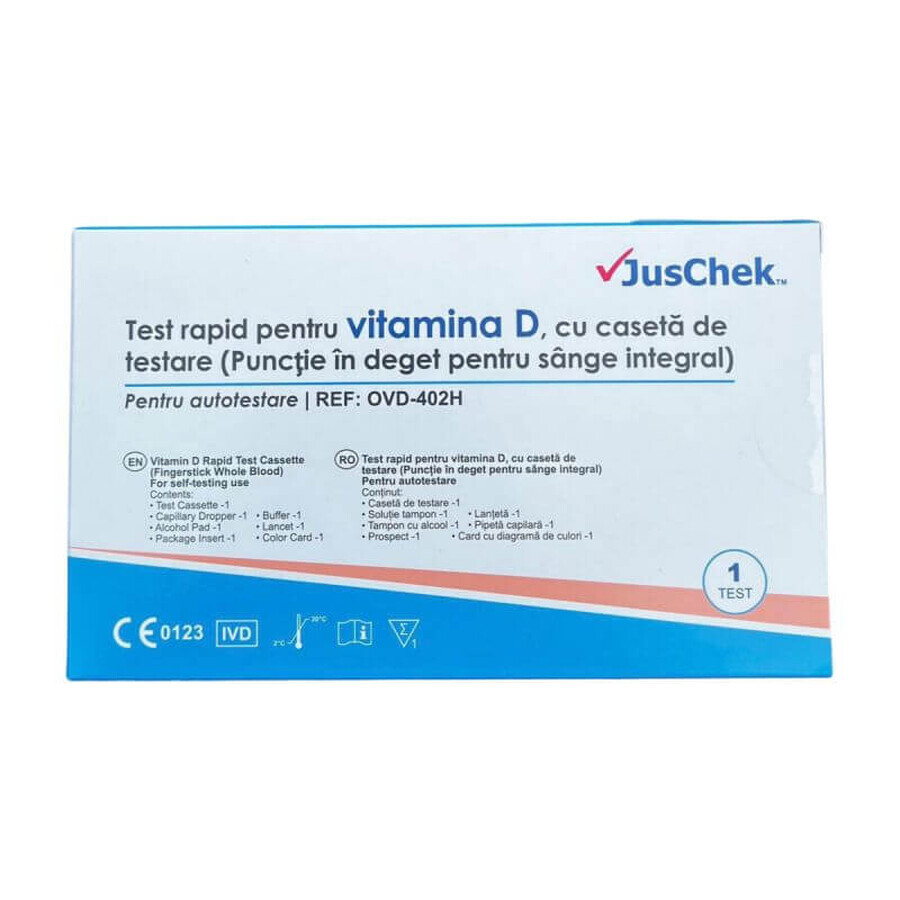
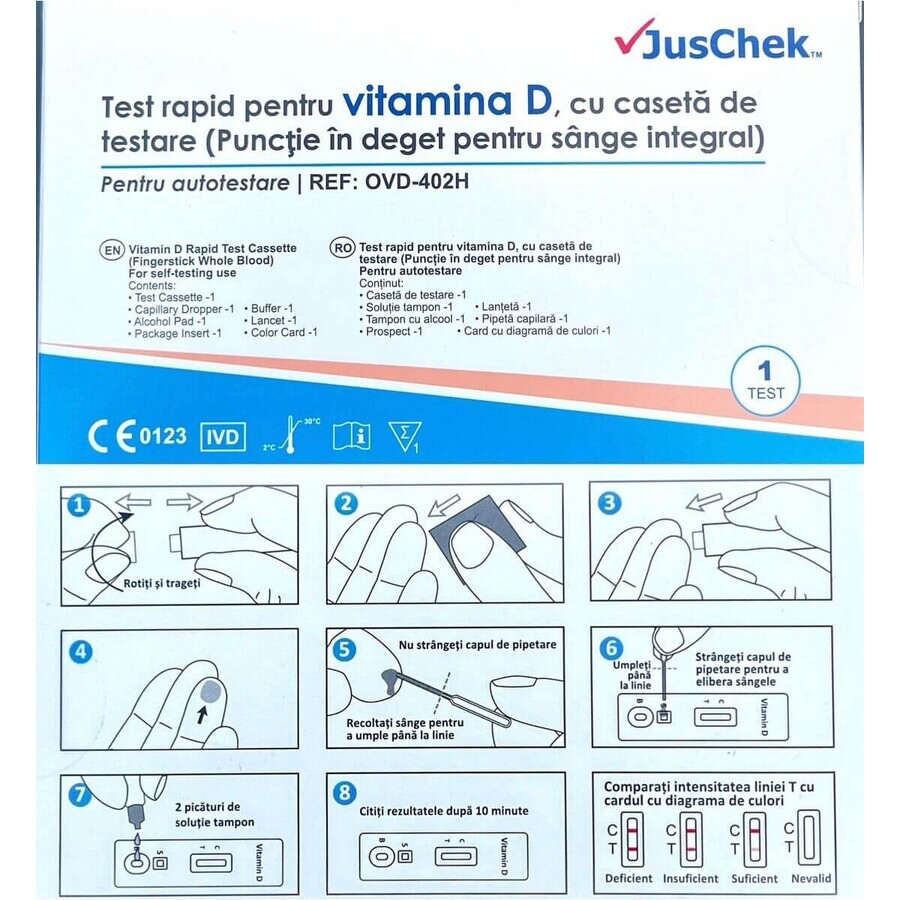


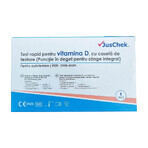
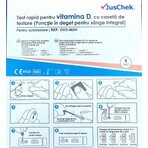


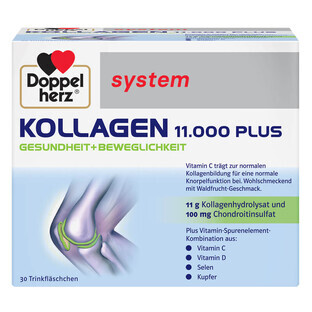



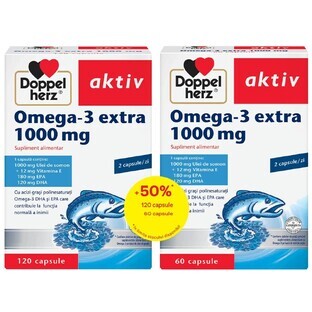
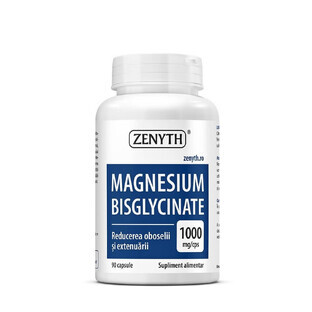
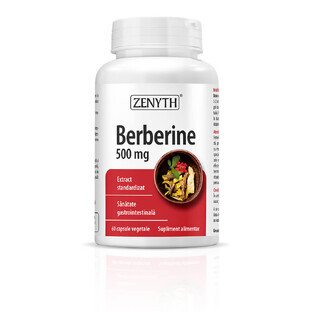

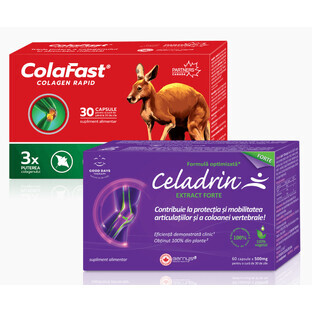
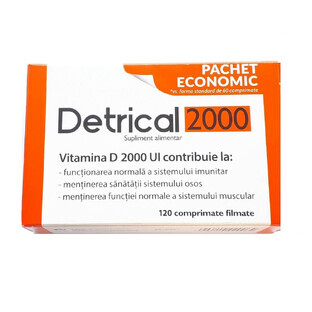

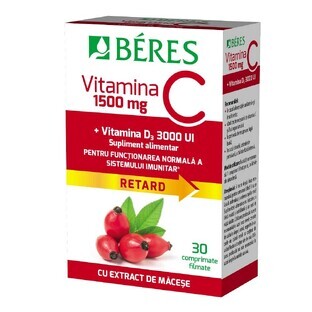
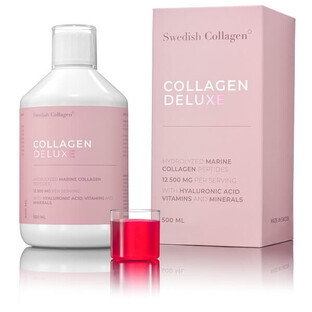

































 Description
Description 


